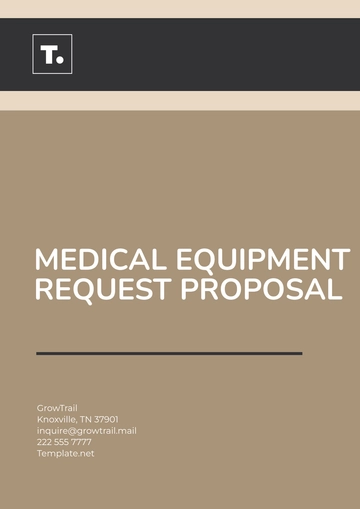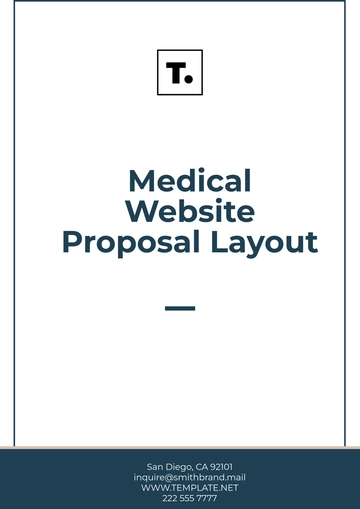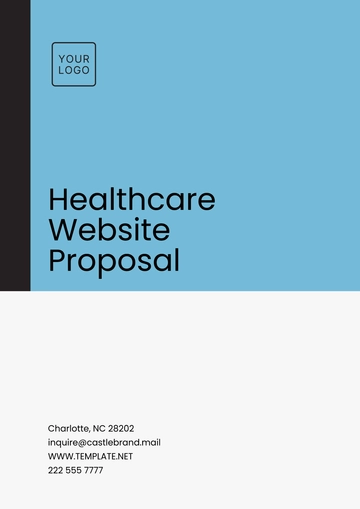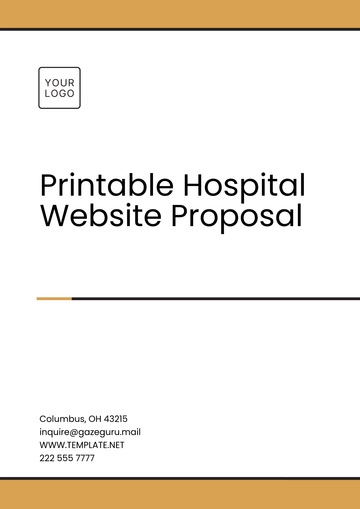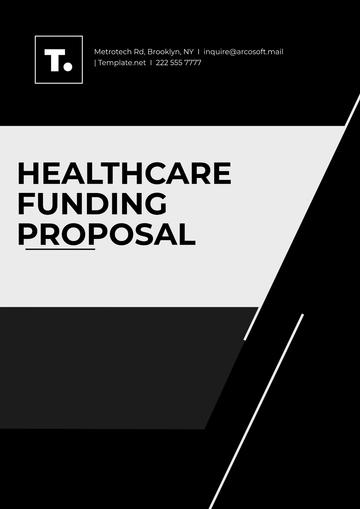Free Healthcare Pricing Proposal
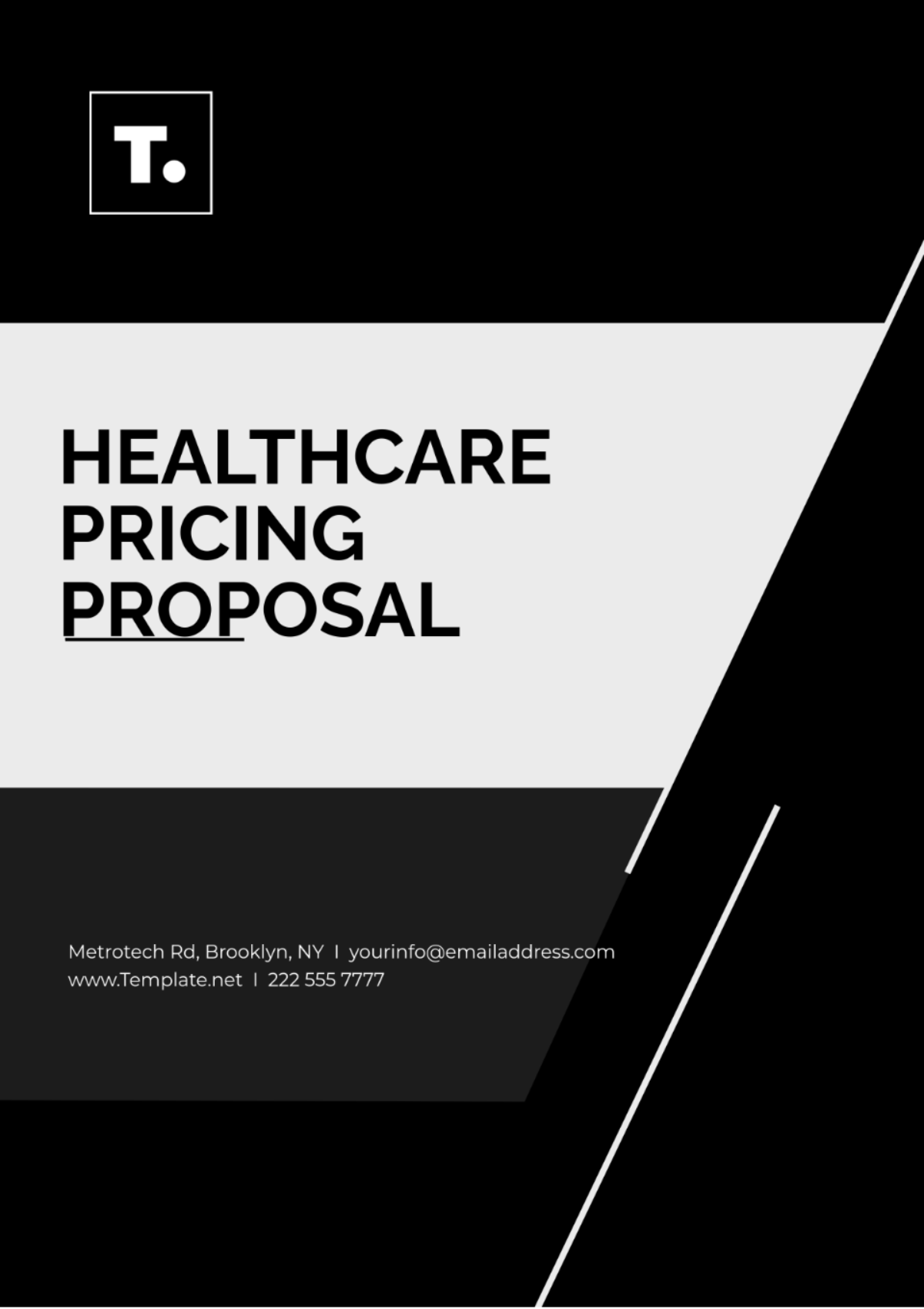
Table of Contents
I. Introduction
II. Current Healthcare Market Landscape
III. Proposed Pricing Strategy
IV. Strategic Implementation Plan
V. Financial Analysis
VI. Benefits and Limitations
VII. Conclusion
I. Introduction
The purpose of this proposal is to outline a strategic approach to healthcare pricing that is competitive, sustainable, and equitable. With the healthcare industry undergoing rapid transformations, adapting pricing strategies to meet the demands of both providers and patients is crucial.
II. Current Healthcare Market Landscape
The current healthcare market is characterized by rising costs, increased competition, and a heightened focus on value-based care. Providers are challenged to offer quality care while managing operational costs. Patients seek transparency and affordability, influencing their choices in healthcare services.
Key Market Challenges:
Escalating operational and administrative costs.
The shift towards outpatient and value-based care.
Regulatory pressures and changing reimbursement models.
Increased patient demand for pricing transparency and choice.
III. Proposed Pricing Strategy
Our proposed pricing strategy aims at maintaining a balance between healthcare providers' financial viability and patients' affordability. This involves a dynamic pricing model that incorporates cost, value, and competition.
IV. Strategic Implementation Plan
To implement the proposed pricing strategy effectively, a phased approach will be utilized. This plan will ensure seamless adaptation across various operational areas while maintaining stakeholder engagement.
Implementation Phases:
Phase 1: Assessment and Analysis - Conduct a comprehensive review of existing pricing structures and market pricing benchmarks.
Phase 2: Design - Develop a pricing model that incorporates value-based pricing and competitive analysis.
Phase 3: Pilot - Roll out a pilot program to test the proposed pricing strategy in selected markets.
Phase 4: Evaluation and Adjustment - Assess pilot program results and make necessary adjustments for broader implementation.
Phase 5: Full Implementation - Deploy the refined pricing model across all services and locations.
V. Financial Analysis
Financial sustainability is a cornerstone of the proposed pricing strategy. Below is the projected financial outlook demonstrating expected revenues, costs, and profitability.
Year | Projected Revenue | Estimated Costs | Expected Profitability |
|---|---|---|---|
2054 | $10,000,000 | $7,000,000 | $3,000,000 |
2055 | $12,000,000 | $8,000,000 | $4,000,000 |
2056 | $14,000,000 | $9,000,000 | $5,000,000 |
VI. Benefits and Limitations
While the proposed pricing strategy offers numerous benefits, certain limitations must also be considered to ensure balanced decision-making and strategic planning.
Benefits:
Improved alignment with market trends and patient needs.
Enhanced operational efficiency and revenue management.
Strengthened competitive position through value-based services.
Limitations:
Initial implementation costs and resource allocation.
Potential resistance from stakeholders accustomed to traditional pricing models.
Challenges in adapting to regulatory changes and healthcare policies.
VII. Conclusion
The proposed healthcare pricing strategy aligns with emerging market demands and provides a framework for sustainable growth. By balancing cost-efficiency with market competitiveness, this strategy positions our organization to achieve long-term success in a dynamic healthcare environment.
- 100% Customizable, free editor
- Access 1 Million+ Templates, photo’s & graphics
- Download or share as a template
- Click and replace photos, graphics, text, backgrounds
- Resize, crop, AI write & more
- Access advanced editor
Streamline your healthcare pricing proposals with Template.net's Healthcare Pricing Proposal Template. This fully editable and customizable template adapts seamlessly to your needs, enhancing clarity and professionalism. Designed for efficiency, it’s also AI editable, allowing quick, intelligent adjustments. Elevate your proposal game with this essential tool and save valuable time on every project.
You may also like
- Business Proposal
- Research Proposal
- Proposal Request
- Project Proposal
- Grant Proposal
- Photography Proposal
- Job Proposal
- Budget Proposal
- Marketing Proposal
- Branding Proposal
- Advertising Proposal
- Sales Proposal
- Startup Proposal
- Event Proposal
- Creative Proposal
- Restaurant Proposal
- Blank Proposal
- One Page Proposal
- Proposal Report
- IT Proposal
- Non Profit Proposal
- Training Proposal
- Construction Proposal
- School Proposal
- Cleaning Proposal
- Contract Proposal
- HR Proposal
- Travel Agency Proposal
- Small Business Proposal
- Investment Proposal
- Bid Proposal
- Retail Business Proposal
- Sponsorship Proposal
- Academic Proposal
- Partnership Proposal
- Work Proposal
- Agency Proposal
- University Proposal
- Accounting Proposal
- Real Estate Proposal
- Hotel Proposal
- Product Proposal
- Advertising Agency Proposal
- Development Proposal
- Loan Proposal
- Website Proposal
- Nursing Home Proposal
- Financial Proposal
- Salon Proposal
- Freelancer Proposal
- Funding Proposal
- Work from Home Proposal
- Company Proposal
- Consulting Proposal
- Educational Proposal
- Construction Bid Proposal
- Interior Design Proposal
- New Product Proposal
- Sports Proposal
- Corporate Proposal
- Food Proposal
- Property Proposal
- Maintenance Proposal
- Purchase Proposal
- Rental Proposal
- Recruitment Proposal
- Social Media Proposal
- Travel Proposal
- Trip Proposal
- Software Proposal
- Conference Proposal
- Graphic Design Proposal
- Law Firm Proposal
- Medical Proposal
- Music Proposal
- Pricing Proposal
- SEO Proposal
- Strategy Proposal
- Technical Proposal
- Coaching Proposal
- Ecommerce Proposal
- Fundraising Proposal
- Landscaping Proposal
- Charity Proposal
- Contractor Proposal
- Exhibition Proposal
- Art Proposal
- Mobile Proposal
- Equipment Proposal
- Student Proposal
- Engineering Proposal
- Business Proposal


